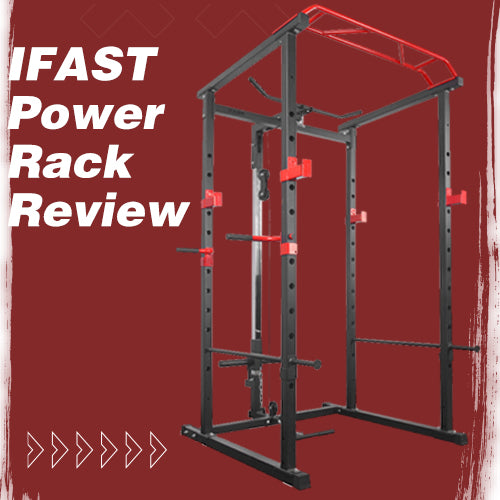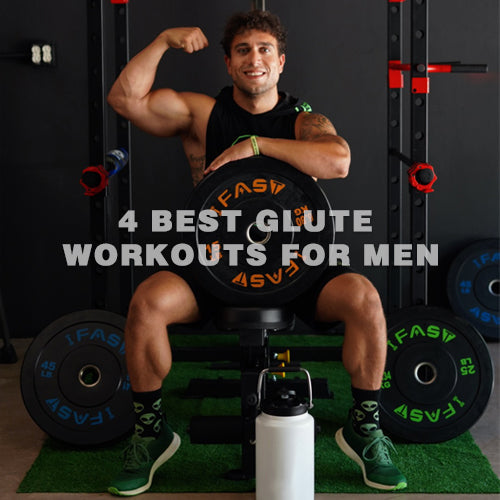
Compared with other fitness equipment, the most significant advantage of the power rack is that it can help you exercise a very comprehensive part. Its limitations are relatively small. Every home gym will have it, and there can be many kinds. The corresponding exercise method can increase your body flexibility and exercise every part of your body, so it is very suitable for exercise and fitness.
The Power of the Power Rack
What is a Power Rack?
A power rack, also known as a squat rack or power cage, is a sturdy, four-posted structure designed to support a variety of free weight exercises. Its primary purpose is to provide a safe environment for lifting heavy weights, particularly during compound movements like squats, bench presses, and overhead presses.
Structure and Components

- Uprights: The vertical posts on either side of the rack that establish the framework.
- Safety Pins or Spotter Arms: Adjustable bars that act as a safety net, catching the barbell if you fail to complete a lift.
- Pull-Up Bar: A horizontal bar at the top for performing pull-ups and hanging leg raises.
- J-Hooks or Bar Hooks: Adjustable hooks to hold the barbell at different heights.
Transformative Features
Safety First
One of the standout features of a power rack is its safety mechanism. With adjustable safety pins or spotter arms, lifters can set the barbell to a height that ensures, in the event of muscle fatigue, they can safely disengage from the lift without injury.
Versatility Unleashed
Power racks offer a plethora of exercise options. From classic barbell exercises like squats, bench presses, and overhead presses to more advanced movements like rack pulls and pin squats, the versatility of a power rack makes it a cornerstone for strength training.
Home Gym Hero
In recent years, the rise of home gyms has been meteoric, and the power rack has played a pivotal role. Its compact design, coupled with the ability to handle heavy weights, makes it an ideal centerpiece for those looking to build a formidable home gym.
Power Cage Muscle Worked
The muscles worked during power cage workouts depend on the specific exercises performed. However, some of the primary muscle groups commonly targeted include:
Quadriceps
The power cage enables exercises like squats and lunges, which engage the quadriceps muscles located in the front of the thighs.

Hamstrings
Exercises such as deadlifts and Romanian deadlifts performed in the power cage effectively target the hamstring muscles at the back of the thighs.
Glutes
Squats, hip thrusts, and glute bridges done in the power cage are effective for activating and strengthening the gluteal muscles.
Back Muscles
Pull-ups, chin-ups, LAT pull down and rows performed using the power cage engage the muscles of the back, including the latissimus dorsi, rhomboids, and trapezius.


Chest Muscles
The power cage allows for bench presses, push-ups, and dips, which primarily work the muscles of the chest, including the pectoralis major and minor.

Shoulders
Overhead presses, shoulder presses, and shrugs performed in the power cage target the deltoid muscles of the shoulders.
Core Muscles
Various exercises performed within the power cage, such as planks, hanging leg raises, and Russian twists, engage the muscles of the core, including the rectus abdominis, obliques, and transverse abdominis.
Overall, the power cage provides a versatile platform for targeting multiple muscle groups in the body, making it an effective tool for strength training and muscle development.
What Exercises Can You Do With the Power Cage?
IFAST has prepared a full-body power rack exercise poster for everyone! If you are interested, you can download it to exercise.
Download or printable power rack exercise poster

More Workout Poster:
Building Your Routine with a Power Rack
Beginners' Blueprint
If you're new to strength training, a power rack provides an excellent starting point. Begin with foundational exercises like squats, bench presses, and overhead presses. The adjustable safety features make these exercises accessible and safe for beginners.
Progressive Overload
The adaptability of a power rack allows for progressive overload, a fundamental principle of strength training. As you grow stronger, you can incrementally increase the weight, challenging your muscles and promoting continuous growth.
Varied Rep Ranges
Whether you're focusing on hypertrophy with higher rep ranges or strength with lower reps, the power rack accommodates various training protocols. Adjust the safety pins or spotter arms to match your preferred rep range and target specific fitness goals.
This set is our most popular product, it can basically meet all your exercise needs, keep you safe, and is an essential all-in-one equipment for building a home gym
FAQs
Is a power rack necessary for home gym?
While not absolutely required, a power rack is highly recommended for a home gym setup, especially if lifting heavy weights alone. It adds a crucial safety component.
How do you set up safety pins on a power rack?
Set the pin catches slightly below the lowest point of your lift. For bench, this is around chest height. For squats, position them around parallel or slightly below.
Can you bench in a power cage?
Yes, you can absolutely bench press inside a power rack or cage. The key benefits are:
- Built-in safety with adjustable pin/catch system to prevent failed reps from crushing you
- Allows bench pressing alone at home without a spotter
- Can set pins for partial range pin presses
- Space efficient compared to needing open floor space
- Most racks allow secure racking of bars on pins/hooks
Setting up the safety pins at proper chest height is crucial for a safe bench press inside the power rack. It provides a spotter system for heavy lifts.
Can you do pull-ups and chin-ups on a power rack?
Many power racks have a pull-up bar attached either on top or offset to the side, enabling pull-ups, chin-ups, and other grip exercises.
How much space is needed for a power rack?
Most power racks have a footprint around 4'x4' to 4'x6'. Make sure to allow ample clearance on all sides for moving weights on/off and safe lifting.
Are power racks dangerous if used improperly?
Power racks greatly enhance safety, but injuries can still occur if weights are dropped incorrectly or the pins are improperly set. Follow all safety precautions.
What other accessories pair well with a power rack?
Common add-ons include a weight bench, dip attachments, landmine attachments, barbell holders, and weight plate storage pegs.


